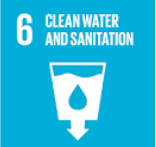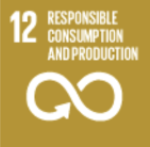The Digital Notebook is a space to hold your thoughts, questions, and growing understanding throughout this Unit. You will be able to access it from every Module. Use The Digital Notebook to jot your thinking, take notes, or as a space to develop your writing. You can print and export it anytime, and at the end of module 8 you’ll be reminded to save a copy for yourself.
All the Water in the World by George Ella Lyon
Snowflake: A Water Cycle Story by Neil Waldman
Agent H2O Rides the Water Cycle by Rita Goldner
Ice Boy by David Ezra Stein
Don’t Let the Pidgeon Stay Up Late by Mo Willems (or any other of the Pidgeon titles)
Earth Systems graphic from NASA
Peanuts by Charles M. Schultz
Bleeker by Jonathan Mahood
Standards & BlueTech Alignment
| Anchor Phenomenon | Infographic on the State of Water |
| Student Action / Outreach | Design a comic to share how to conserve water. |
| Career Connection | Operations Manager, Wastewater Engineer, Water Resource Specialist |
| Blue Tech Alignment / Ocean Literacy Principles (OLP) | OLP 6: The Ocean and humans are inextricably interconnected. (3-5) |
| Water Issue(s) Addressed | Conservation, Pollution, Access to Clean Water |
| Next Generation Science Standards (NGSS) | 5-ESS3-1: Obtain and combine information about ways individual communities use science ideas to protect the Earth’s resources and environment. |
| Sustainable Development Goals (SDG) |   |
| Literacy Standards | CCSS.ELA-LITERACY.RI.5.2
Determine two or more main ideas of a text and explain how they are supported by key details; summarize the text. Draw on information from multiple print or digital sources, demonstrating the ability to locate an answer to a question quickly or to solve a problem efficiently. Integrate information from several texts on the same topic in order to write or speak about the subject knowledgeably. Introduce a topic or text clearly, state an opinion, and create an organizational structure in which ideas are logically grouped to support the writer’s purpose. Provide logically ordered reasons that are supported by facts and details. |
| Visual Arts | VA:Cr2.1.5a Experiment and develop skills in multiple art-making techniques and approaches through practice. |
Overview
To launch this unit on fresh water, students use prior knowledge to think about what makes up the ecosystem around them. This helps contextualize that water is life and is at the heart of every organism’s ability to survive. They draw a model of their ecosystem and label all of the systems that they can think of. They watch videos and read books to identify that their ecosystem is actually made up of what Scientists describe as the Earth systems: Hydrosphere, Geosphere, Biosphere, and Atmosphere. This begins to open their understanding that there are larger systems at play right in their own backyards.
Engage
Where is all the water?
Students brainstorm a list of all of the places where freshwater can be found on Earth. Students watch this illustrative tour of freshwater – click here
As they watch the video, they write down the different types and forms of water they see.
Explore
Question to Investigate: How do our Earth’s systems interact?
In order to answer this question, we must first go back to our understanding of ecosystems. Gather students’ prior knowledge through a class discussion on ecosystems.
For this final question, ask students to draw an initial model of their backyard ecosystem in their inquiry notebook. If they don’t have a backyard, suggest any green space near them, such as a park or even a school playground. The goal is to help students identify all of the living and nonliving things in the ecosystem. Invite them to label their model and use arrows to show movement of water if relevant. They can also show the unseen factors at play in their ecosystem. At this point, it is important to elicit students’ prior knowledge.
Have students share their models in small groups. When they share, have them identify their ecosystem, living and nonliving things, and the interactions between these things.
After students share their ecosystem models, the teacher shares that our ecosystems exist as a part of a larger system on Earth, called the biosphere. There are four major Earth systems that make our planet unique and habitable. Our ecosystems rely on these different Earth systems’ interactions: Geosphere, Hydrosphere, Atmosphere, Biosphere. Students are going to explore these in more depth later in the lesson. To get students thinking about these interactions, share the Earth Systems graphic from NASA – click here.
Launch the Anchoring Phenomenon
Description of Phenomenon: Water is everywhere on Earth. However, it is a natural resource threatened by human impact. This is an infographic about global water issues.
Show students this infographic and ask:
Capture their thinking on a chart – What are we noticing and wondering about water issues affecting the world? Define hydrosphere, and explain that the hydrosphere is an essential Earth system and it needs our help. As students explore issues of freshwater, they will be exploring the Essential Question: What can we do to conserve Earth’s limited water?
Ask students what they already do at home to conserve water. Let students know that we need everyone to help and that they will be gathering more ideas about how to spread their conservation message worldwide.
Engage
In this unit, students will be reading to understand water as a precious resource, and to understand water and the hydrosphere as a system. They will construct big ideas inside each text, and integrate ideas across texts. Each module will have suggested read alouds to engage them in thinking and talking about water and where it comes from. If possible, links to digital read alouds are provided.
Students will also need ample informational texts about freshwater, its sources, and our need to preserve and conserve water (print or digital including video) for Independent reading research. Each module suggests texts, but you will want to check and gather from your library, science textbooks, or other sources to gather.
Read Aloud
In Module 1, the suggested read aloud texts will engage students in thinking and talking about the water cycle. In addition to the read alouds, two videos will introduce students to planet Earth’s four spheres, or systems.
Suggested texts:
All the Water in the World by George Ella Lyon
Agent H2O Rides the Water Cycle by Rita Goldner
Water Rolls, Water Rises by Pat Mora
Snowflake: A Water Cycle Story by Neil Waldman
One Well: The Story of Water On Earth by Rochelle Strauss
Four Spheres Part 1 (Geo and Bio)
Four Spheres Part 2 (Hydro and Atmo)
Independent reading time should be focused on exploration of a range of information regarding freshwater. In this module, have students browse through texts on sources of freshwater, issues with freshwater, access to freshwater, etc. to begin developing a sense of the breadth of the conversation about water. Create charts for the varied subcategories of exploration, and encourage children to post interesting information or questions.
Shared and Small Group Reading
Recommendations for leveled and fifth grade NGSS-aligned texts for shared and small group reading are included in the BlueTech materials matrix. Shared reading instruction for this unit should include the overarching meaning making strategies as outlined in this unit.
Additionally, shared and small group reading should include focus points specific to the nonfiction genre. This genre specific instruction will support children’s meaning making as they delve deeply into both read aloud and independent reading. Focus points for nonfiction genre shared and small group reading in fifth grade may include any focus points included in the previous grade level which require added support, and:
Independent Reading
As children read independently and research water, have them keep an inquiry notebook to jot their thoughts, and intriguing data and facts. This information will help them to formulate the characters, problems, and setting for their comic strips.
Research supports:
The Four Spheres of Earth by Paul Larson
Earth’s Hydrosphere by Amy Hayes
Earth’s Geosphere by Jenna Tolli
Explain
As students read the different texts and watch the videos about Earth systems, they can keep track in their inquiry notebook or on this graphic organizer from NASA to build their understanding – click here
Writing Workshop
In this unit, children will be gaining a heightened awareness of water as a finite resource, and of the issues with clean, accessible water, through comic strips. If you are new to teaching comic writing, the following information may prove helpful – click here
Module 1 begins with an exploration of comic strips as mentor texts. Choose a variety of comics for children to explore, with varied topics, characters, and lengths. Give children time to read and reread, and enjoy the exploration of ideas. Then, focus on author’s craft:
Mentor text options might include:
Peanuts by Charles M. Schultz
Bleeker by Jonathan Mahood
You may also want to explore picture books that are crafted to be comic-like. Possibilities include:
Agent H2O Rides the Water Cycle by Rita Goldner
Ice Boy by David Ezra Stein
Don’t Let the Pidgeon Stay Up Late by Mo Willems (or any other of the Pidgeon titles)
Wallace the Brave by Will Henry
Elaborate
Students return to their initial ecosystem models from the beginning of the lesson and revise their models adding in knowledge gained from text and media. Encourage students to use labels representing the Earth systems and arrows to show interactions.
Our Planet: Fresh Water (watch from 3:23 – 6:45) You will see the entire movie throughout the unit. During the Elaborate section of each module, you will be revisiting different parts of this film for deeper inquiry and conversation.
Reflect
What role does water play in our ecosystem?
Students complete the Phenomenon Board with the class and share back what they did and what they figured out. They make a connection from their learning in this module back to the Anchor Phenomenon.
| Investigative Phenomenon | Question to investigate | What we did | What we figured out | Connections to the phenomenon | Questions we still have |
| Backyard/ Community Ecosystem
Our ecosystem is affected by four Earth systems. |
How do our Earth’s systems interact? | We modeled an ecosystem and its components. We tried to name the components of an ecosystem. We read different texts and watched videos about our Earth’s systems. | Scientists describe the Earth systems: Hydrosphere, Geosphere, Biosphere, Atmosphere. These systems interact in different ways. | Water is part of the hydrosphere. (water cycle) | Complete with students. |
Copyright © 2023 TMA BlueTech
| Cookie | Duration | Description |
|---|---|---|
| cookielawinfo-checkbox-analytics | 11 months | This cookie is set by GDPR Cookie Consent plugin. The cookie is used to store the user consent for the cookies in the category "Analytics". |
| cookielawinfo-checkbox-functional | 11 months | The cookie is set by GDPR cookie consent to record the user consent for the cookies in the category "Functional". |
| cookielawinfo-checkbox-necessary | 11 months | This cookie is set by GDPR Cookie Consent plugin. The cookies is used to store the user consent for the cookies in the category "Necessary". |
| cookielawinfo-checkbox-others | 11 months | This cookie is set by GDPR Cookie Consent plugin. The cookie is used to store the user consent for the cookies in the category "Other. |
| cookielawinfo-checkbox-performance | 11 months | This cookie is set by GDPR Cookie Consent plugin. The cookie is used to store the user consent for the cookies in the category "Performance". |
| viewed_cookie_policy | 11 months | The cookie is set by the GDPR Cookie Consent plugin and is used to store whether or not user has consented to the use of cookies. It does not store any personal data. |